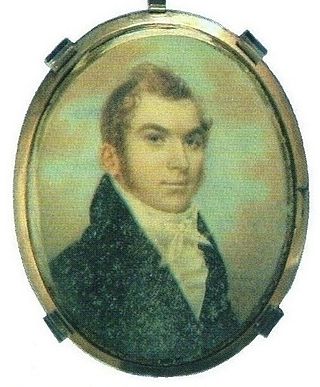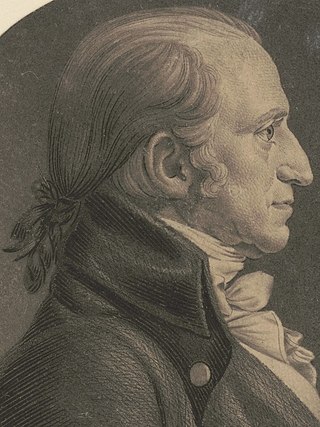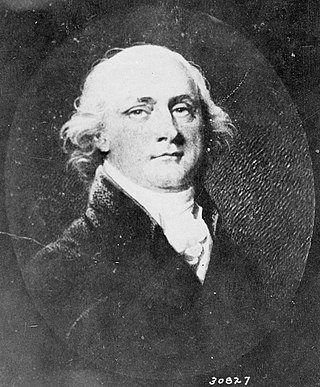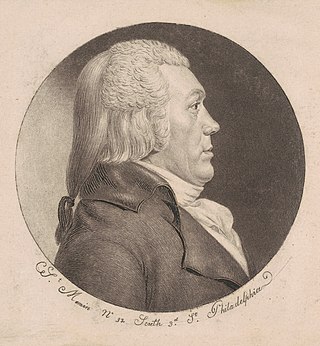Related Research Articles

Camden County is a county located in the southeastern corner of the U.S. state of Georgia. According to the 2020 census, its population was 54,768. Its county seat is Woodbine, and the largest city is Kingsland. It is one of the original counties of Georgia, created February 5, 1777. It is the 11th-largest county in the state of Georgia by area, and the 41st-largest by population.

St. Marys is a city in Camden County, Georgia, United States, located on the southern border of Camden County on the St. Marys River in the state's Low Country. It had a population of 18,256 at the 2020 census, up from 17,121 at the 2010 census. It is part of the Kingsland, Georgia Micropolitan Statistical Area. The Florida border is just to the south across the river, Cumberland Island National Seashore is to the northeast, and Kingsland, Georgia, is to the west. Jacksonville, Florida, is 38 miles south, and Savannah, Georgia, is 110 miles north.
James Gunn was a delegate to the Continental Congress and a United States Senator from Georgia.
William Leigh Pierce was a Founding Father of the United States, military officer during the Revolutionary War, member of the Continental Congress, merchant, and planter and slave owner. As a delegate representing Georgia at the Constitutional Convention of 1787, he left before he could sign the U.S. Constitution.

Edward Telfair was a Scottish-born American Founding Father, politician and slave trader who served as the governor of Georgia from 1786 to 1787 and again from 1790 to 1793. He was a member of the Continental Congress and one of the signers of the Articles of Confederation.

Uriah Forrest was an American statesman and military leader from Maryland. Forrest was born in St. Mary's County in the Province of Maryland, near Leonardtown. In his early childhood, he received only limited schooling. Born into a family with three other brothers, he was the direct descendant of a person who came to Jamestown, Virginia, in 1608.

Alexander McGillivray, also known as Hoboi-Hili-Miko, was a Muscogee (Creek) leader. The son of a Muscogee mother and a Scottish father, he was literate and educated, and understood the "white" European world and merchandise trading well. These gave him prestige, especially with European Americans, who were glad to finally find a Creek leader they could talk to and deal with. He used his role as link between the two worlds to his advantage, not always fairly, and became the richest Creek of his time.

James Jackson was an early British-born Georgia politician of the Democratic-Republican Party. He was a member of the U.S. House of Representatives from 1789 until 1791. He was also a U.S. Senator from Georgia from 1793 to 1795, and from 1801 until his death in 1806. In 1797 he was elected 23rd Governor of Georgia, serving from 1798 to 1801 before returning to the senate.
The Treaty of New York was a treaty signed in 1790 between leaders of the Muscogee and U.S. Secretary of War Henry Knox, who served in the presidential administration of George Washington.

John Francis Mercer was a Founding Father of the United States, politician, lawyer, planter, and slave owner from Virginia and Maryland. An officer during the Revolutionary War, Mercer initially served in the Virginia House of Delegates and then the Maryland State Assembly. As a member of the assembly, he was appointed a delegate from Maryland to the Philadelphia Convention of 1787, where he was a framer of the U.S. Constitution though he left the convention before signing. Mercer was later elected to the U.S. House of Representatives from two different districts in Maryland. In 1801—1803, he served as Maryland's 10th governor.
Josiah Tattnall was an American planter, soldier and politician from Savannah, Georgia. He represented Georgia in the U.S. Senate from 1796 to 1799, and was the 25th Governor of Georgia in 1801 and 1802. Born near Savannah, Georgia, at Bonaventure Plantation in the early 1760s to Mary Mullryne and Josiah Tattnall, he studied at Eton School before joining Anthony Wayne's troops at Ebenezer during the American Revolutionary War. After the war, he was elected brigadier general of the 1st Regiment in the Georgia Militia. He helped to rescind the Yazoo land fraud of 1795. He died in Nassau, New Providence.
The Treaty of Colerain was signed at St. Marys, Georgia in Camden County, Georgia, by Benjamin Hawkins, George Clymer, and Andrew Pickens for the United States and representatives of the Creek Nation, for whom Indian trader Langley Bryant served as an interpreter, on June 29, 1796, proclaimed on March 18, 1797, and codified as 7 Stat. 56. Colerain was a small community and the site of a U.S. Indian factory founded by James Seagrove.

Lewis Richard Morris was an American lawyer and politician. He served as a United States representative from Vermont.
Henry Osborne was a public official from Pennsylvania and Georgia.

The drafting of the Constitution of the United States began on May 25, 1787, when the Constitutional Convention met for the first time with a quorum at the Pennsylvania State House in Philadelphia, Pennsylvania to revise the Articles of Confederation. It ended on September 17, 1787, the day the Frame of Government drafted by the convention's delegates to replace the Articles was adopted and signed. The ratification process for the Constitution began that day, and ended when the final state, Rhode Island, ratified it on May 29, 1790.

The Battle of Fort Point Peter was a successful attack in early 1815 by a British force on a smaller American force on the Georgia side of the St. Marys River near St. Marys, Georgia. The river was then part of the international border between the United States and British-allied Spanish Florida; it now forms part of the boundary between Georgia and Florida. Occupying coastal Camden County allowed the British to blockade American transportation on the Intracoastal Waterway. The attack on Forts St. Tammany and Peter occurred in January 1815, after the signing of the Treaty of Ghent, which would end the War of 1812, but before the treaty's ratification. The attack occurred at the same time as the siege of Fort St. Philip in Louisiana and was part of the British occupation of St. Marys and Cumberland Island.
Events from the year 1787 in the United States. The United States Constitution was written and the ratification process began.
Events from the year 1791 in the United States.

The 1792–93 United States Senate elections were held on various dates in various states, coinciding with President George Washington's unanimous re-election. As these U.S. Senate elections were prior to the ratification of the Seventeenth Amendment in 1913, senators were chosen by state legislatures. Senators were elected over a wide range of time throughout 1792 and 1793, and a seat may have been filled months late or remained vacant due to legislative deadlock. In these elections, terms were up for the ten senators in Class 2.
Juan Nepomuceno de Quesada y Barnuevo Arrocha (1738–1798) was a military officer who served as Governor and intendant of Honduras between 1783 and 1789, and Governor of East Florida from July 1790 to March 1796.
References
- 1 2 Coleman, Georgia Biography, 2:876–78
- ↑ John H. Christian. The Founders of St. Marys. 1990.
- 1 2 Daniel M. Smith. James Seagrove and the Mission to Tuckabatchee, 1793. The Georgia Historical Quarterly, Vol 44, No 1. March 1960, p 41-55.
- ↑ J. W. Caughey. McGillivray of the Creeks. Norman Oklahoma, 1938. 286-288.
- ↑ “To George Washington from James Seagrove, 24 July 1789,” Founders Online, National Archives. Source: The Papers of George Washington, Presidential Series, vol. 3,15 June 1789–5 September 1789, ed. Dorothy Twohig. Charlottesville: University Press of Virginia, 1989, pp. 306–308. https://founders.archives.gov/documents/Washington/05-03-02-0169
- ↑ Journal of the Executive Proceedings of the Senate of the United States. Vol. I. Page 11.
- ↑ Library of Congress. George Washington Papers.
- ↑ Executive Journal, Vol.1. 105, 106
- ↑ "Enclosure III: Agreement on Fugitive Slaves, 7 August 1791," Founders Online, National Archives (https://founders.archives.gov/documents/Jefferson/01-22-02-0383, ver. 2013-06-26). Source: The Papers of Thomas Jefferson, vol. 22, 6 August 1791 – 31 December 1791, ed. Charles T. Cullen. Princeton: Princeton University Press, 1986, pp. 408–409.